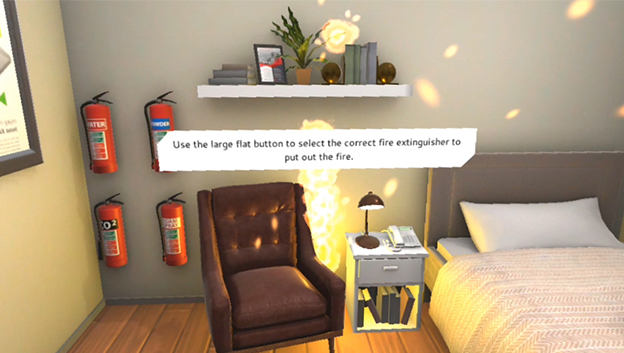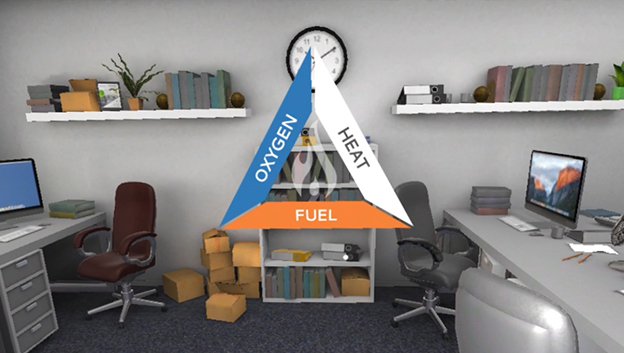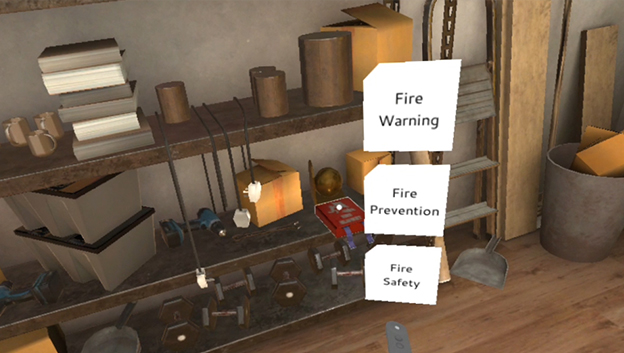The Challenge for VR Training – Fire Safety: Corporate organisations are legally bound to comply with health and safety (H&S) regulations, requiring them to effectively train employees on safety procedures and risks. Traditional training methods are often time-consuming, expensive, and lack engagement.
Employees must be equipped to respond confidently and appropriately in dangerous situations to prevent accidents and minimize harm. Effective training should ensure that staff not only understand potential risks but can also take immediate and informed action in real-life scenarios.
*You can now download VR Fire Safety training from the Meta Store*
Problems with Traditional Training Methods:
- Classroom-based training: Requires coordination of schedules and often involves long sessions, which can be inefficient and costly.
- PowerPoint or video-based training: These methods tend to be passive and disengaging. Furthermore, they fail to adequately assess the learner’s ability to respond to real-life risks.
The Solution: To address these issues, Sliced Bread Animation developed an innovative 8-module VR fire safety training that immerses users in a virtual office environment, complete with staircases and emergency exits. The VR experience provides a lifelike simulation of fire hazards, allowing employees to identify risks and practice emergency procedures.
The training program highlights potential hazards, such as improperly stored materials (e.g. paper and cardboard next to a space heater or a faulty kettle near an oil-covered stove) and offers clear solutions within the context of a real office setting.
In this immersive training experience, users face a realistic scenario where a fire breaks out in the office. They must quickly assess the situation, make decisions, and take appropriate action to extinguish the fire and prevent further damage.
VR is a cost-effective way to train employees in safety, providing a real-world simulation in a safe environment.
Key Benefits of VR Safety Training:
- Emotional Engagement: The immersive nature of VR makes the experience feel real, triggering emotional responses that enhance focus and retention.
- Long-Term Retention: The combination of emotional involvement and active participation ensures that the training leaves a lasting impression, making it easier for users to apply what they’ve learned in real-life situations.
- Learn by Doing: Users gain hands-on experience in handling hazardous situations, rather than just learning theoretical concepts. This practical approach improves their confidence and decision-making skills.
- Flexible, Independent Learning: Users can complete the training at their own pace and schedule, without being dependent on trainers or the availability of other participants.
Key Features of the VR Experience:
- Realistic, Safe Environment: The virtual office space mirrors real-world workplaces, providing users with a safe yet realistic setting to practice emergency procedures.
- Skill Mastery: By experiencing real-life hazards and responding to them in VR, users build practical skills that can be applied confidently in actual emergencies.
- Visual Aids for Retention: Interactive graphics highlight key hazards and connections, making the learning process more engaging and helping users retain critical information.
- Data Tracking and LMS Integration: The training includes detailed analytics on user performance, providing valuable feedback on progress. It also integrates seamlessly with Learning Management Systems (LMS) using xAPI, allowing for efficient tracking of learner outcomes.



